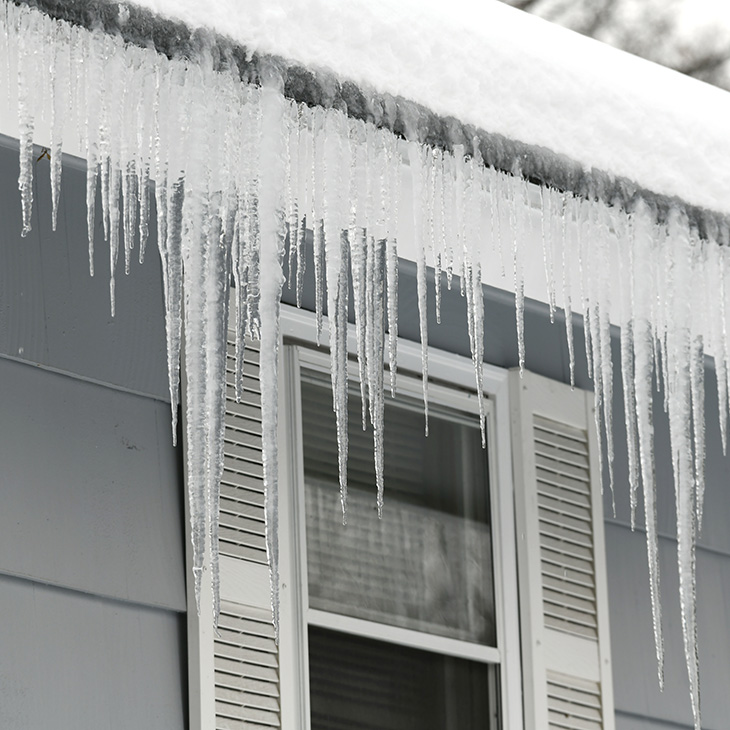
Preparing your home for harsh winter weather
Wednesday, January 15, 2020
When the weatherman forecasts a winter storm, there is more to preparing for the storm than going to the grocery store for bread, milk and eggs.
Gina Peek, Oklahoma State University Cooperative Extension housing and consumer specialist, said while it is good to stock up on some of your favorite comfort foods, it also is a good idea to prepare your home for winter weather.
“During a storm, your home is a place of safety, comfort and warmth. In order for it to stay that way, there are some things homeowners need to do ahead of the storm,” Peek said. “Beyond the inconvenience and discomfort, a winter storm or other severe weather conditions can cause serious damage to your home.”
Clean leaves and other debris out the gutters. This will help ensure rain and melting snow will flow freely away from the roof and not cause an ice dam. This happens when water from melted snow refreezes in the gutters and seeps in under the roof, which results in soaking interior walls.
Keeping the gutters clean is the first step in avoiding an ice dam. In addition, make sure your attic has proper ventilation, and insulate the attic floor well to minimize the amount of heat rising through the attic from within the house.
It also is a good idea to disconnect and drain all outside hoses. If possible, shut off outside water valves.
If there are trees with limbs hanging over your house, remove the limbs that could get weighted down with ice or snow so they will not fall of your roof and cause damage.
An insulated blanket for your hot water tank is a good preparation tactic, especially if it is housed in the garage. Wrap your water pipes in your basement and crawl spaces with insulation sleeves. Also, open cabinet doors in the kitchen, laundry room and bathroom to allow warm air to circulate around pipes.
“Not only do you need to prepare your home for winter weather, you also need to prepare yourself,” Peek said. “If possible, just stay indoors during a storm. If you must go out, walk carefully on snow- and ice-covered sidewalks.”
She also suggests avoiding overexertion if you need to remove snow from the driveway and sidewalk.
“Above all, stay dry. Wet clothing loses all of its insulating value and rapidly transmits the cold,” she said. “When the weather turns bad, the main goal is making sure you, your family and your home are safe.”
MEDIA CONTACT: Trisha Gedon | Agricultural Communications Services | 405-744-3625 | trisha.gedon@okstate.edu
